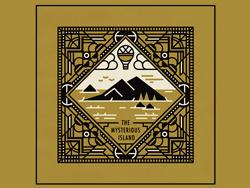Moderate mellow thickness of Tanzania Kilimanjaro coffee flavor taste manor boutique coffee beans
In 1886, Tanganyika Inland was placed under the German sphere of influence. In November 1917, British forces occupied the whole territory of Tanganyika. In 1920, Tanganyika became a British "mandated territory". In 1946, the United Nations General Assembly adopted a resolution to change it into a British "trust land." on May 1, 1961, Tanzania achieved internal autonomy, declared independence on December 9 of the same year, and established the Republic of Tanganyika a year later.
Zanzibar became a British "protectorate" in 1890, gained autonomy on June 24, 1963, declared independence on December 10 of the same year, and became a constitutional monarchy ruled by the Sultan.
On January 12, 1964, the Sang people overthrew the sultan and founded the Zanzibar people's Republic. Tanganyika and Zanzibar formed a United Republic on April 26, 1964, and changed its name to the United Republic of Tanzania on October 29 of the same year. Julius Kambarage Nyerere was the founding president and was re-elected twice until he resigned voluntarily in 1985. Mwinyi was elected the fourth president of the United Republic on October 27 of the same year and was re-elected in 1990.
In December 1992, the Zanzibar government joined the Organization of the Islamic Conference (OIC) without authorization, which was strongly opposed by the coalition government and was forced to withdraw in 1993.
In October 1995, the first multi-party general election was held in Tanzania. Mkapa was elected president of the United Republic, and Salmin was re-elected president of Zanzibar by a narrow margin.
After 1996, the Sang opposition party stepped up its action against the coalition. With the firm support of the coalition government, the mulberry government has taken tough measures to suppress opposition activities and resolutely safeguard the coalition system.
In October 2000, Mkapa was re-elected president of the United Republic, and Karume, a candidate of the Revolutionary Party, was elected president and repeatedly expressed his position of safeguarding national unity, which further dealt a blow to the separatist forces.
Since 2001, the coalition government has continued to consolidate the situation of unity, maintain the coalition regime, strive for moderate forces, crack down on the separatist forces in Zanzibar, and take care of the allocation of budgetary funds and other issues related to Zanzibar's vital interests. Instead of openly advocating separation, the URUF demanded that Zanzibar be given more autonomy.
Mount Mount Kilimanjaro, located in northeastern Tanzania, is the highest mountain in Africa at 5895 meters above sea level. The ultra-high altitude makes the top of the mountain snow all the year round, while Tanzania's main coffee producing area is located at the foot of Mount Kilimanjaro. The area is rich in volcanic soil, which brings an adequate supply of nutrients for the growth of coffee trees. Coffee trees are generally planted at high elevations above 1150 meters, which is one of the prerequisites for Arabica to develop a high-quality flavor.
Tanzanian coffee is mostly washed. After picking, coffee farmers will send the coffee fruit to the nearest processing plant for processing. The treatment step of the water washing method is to screen and remove the impurities in the coffee fruit, then remove the coffee pulp and exocarp, and send it into the fermentation tank to remove the pectin layer on the inner pericarp by fermentation. clean and then dry. Coffee in Tanzania is graded in the same way as in Kenya, both according to the size of coffee beans. When screening raw coffee beans through a sieve with fixed size holes, the larger the number of the sieve is, the larger the particles of raw coffee beans are. The flat beans classified by size are mainly AA+, AA, AB. In addition, PB (peaBerry), which is more produced in Kenya and Tanzania, also has a set of sieve size standards dedicated to grading the size of round beans.
Tanzania is also often compared with its nearest neighbor Kenya. It is said that the earliest Arabica coffee in Tanzania was introduced by Christians from Kenya and is similar to Kenya in flavor characteristics. With grapefruit aromas and soft and bright acidity. However, because the economic conditions of Tanzania are worse than those of Kenya, the production conditions are poor. Tanzania's quality control is not strict enough, destroying the quality of coffee in many processing links, which can not compete with Kenya, which is famous for its high quality. Although it is similar to the Kenyan flavor, Tanzania as a whole is smoother and softer and belongs to the balanced type. With moderately low acidity and sweetness, dark chocolate finish, moderate mellow thickness. Compared with Kenya, which has a prominent personality, Tanzania is less hierarchical and does not give a very prominent feature after drinking, which makes people less impressive. But on the contrary, its soft and round characteristics are also more agreeable, which is easy to be accepted by people who are new to coffee.

Important Notice :
前街咖啡 FrontStreet Coffee has moved to new addredd:
FrontStreet Coffee Address: 315,Donghua East Road,GuangZhou
Tel:020 38364473
- Prev

Introduction to the unique sour Guatemalan coffee flavor and taste of the fine coffee in the manor producing area
Guatemalan coffee taste: bitter and fragrant, good taste. The coffee produced in the highland is mellow and has a good sour taste, which is well received and is the best material for mixed coffee. Guatemala extremely hard beans are elegant and sour, clean and odorless, layered, as well as green apple, berry, jasmine, orange peel, green pepper, sweet and sour fruit, sweet chocolate, and even
- Next

Costa Rican Yerzaro Coffee Flavor taste introduction to the characteristics of Fine Coffee Bean Manor
After peeling, the peel and pulp of the coffee fruit are recovered as feed for livestock, or converted into organic fertilizer, as well as coffee bean dryer fuel. It can be said that in every process of coffee production, Costa Rica complies with the requirements of maintaining the natural environment. Among the many excellent producing areas in Costa Rica, there is a famous producing area named Tarrazu.
Related
- Detailed explanation of Jadeite planting Land in Panamanian Jadeite Manor introduction to the grading system of Jadeite competitive bidding, Red bid, Green bid and Rose Summer
- Story of Coffee planting in Brenka region of Costa Rica Stonehenge Manor anaerobic heavy honey treatment of flavor mouth
- What's on the barrel of Blue Mountain Coffee beans?
- Can American coffee also pull flowers? How to use hot American style to pull out a good-looking pattern?
- Can you make a cold extract with coffee beans? What is the right proportion for cold-extracted coffee formula?
- Indonesian PWN Gold Mandrine Coffee Origin Features Flavor How to Chong? Mandolin coffee is American.
- A brief introduction to the flavor characteristics of Brazilian yellow bourbon coffee beans
- What is the effect of different water quality on the flavor of cold-extracted coffee? What kind of water is best for brewing coffee?
- Why do you think of Rose Summer whenever you mention Panamanian coffee?
- Introduction to the characteristics of authentic blue mountain coffee bean producing areas? What is the CIB Coffee Authority in Jamaica?

